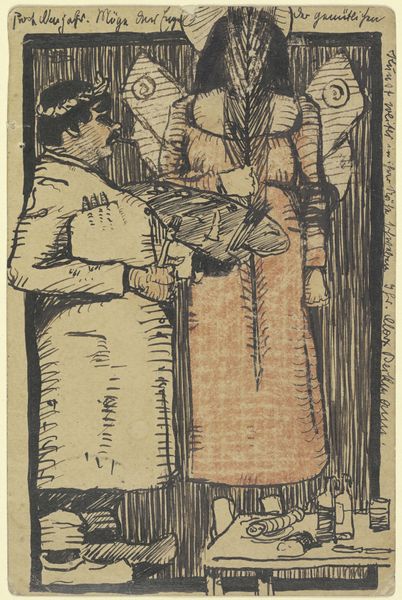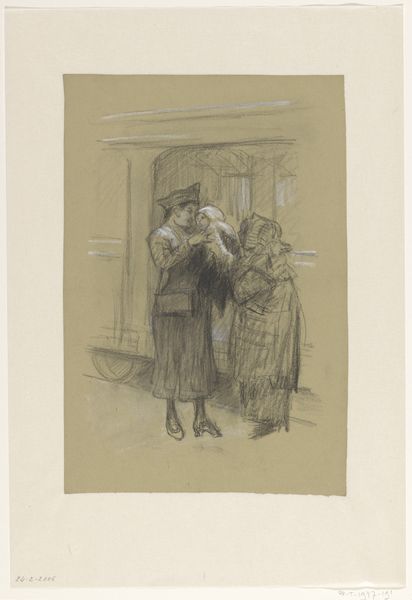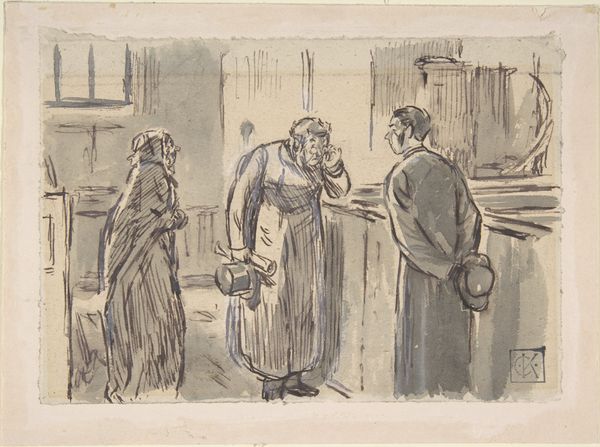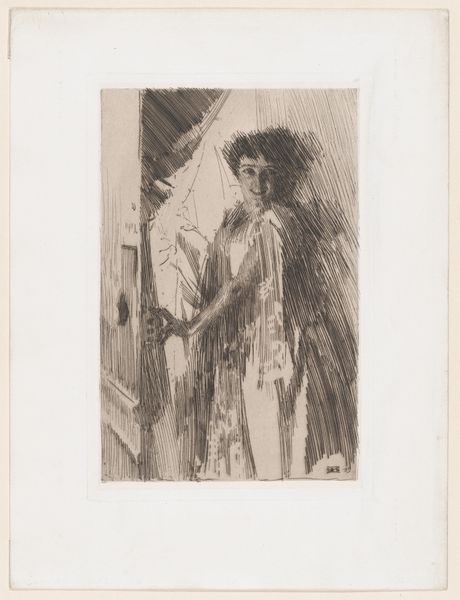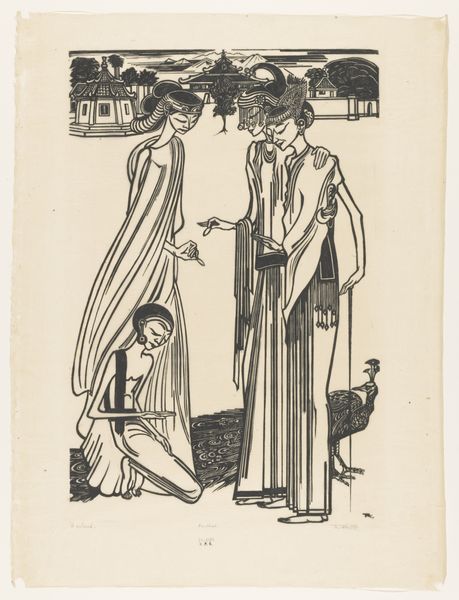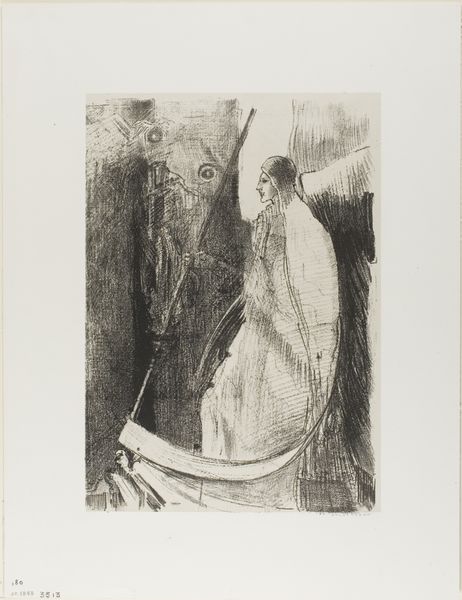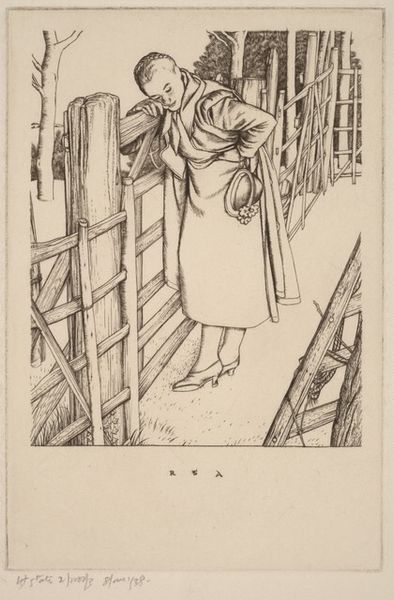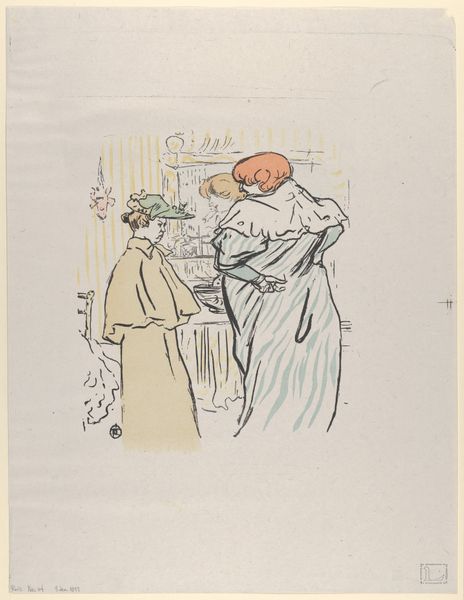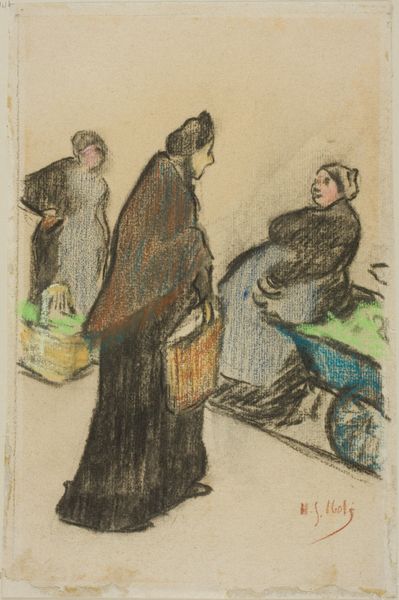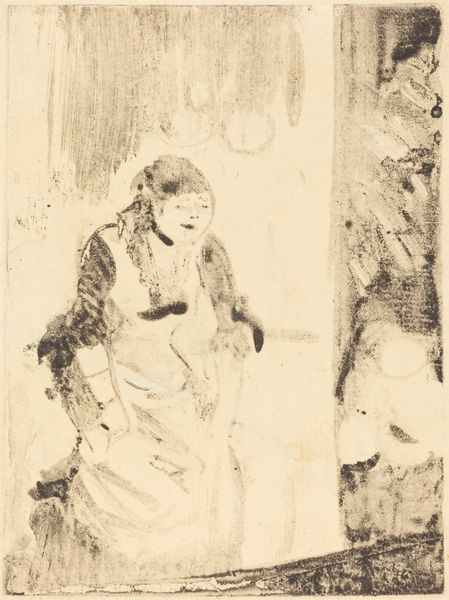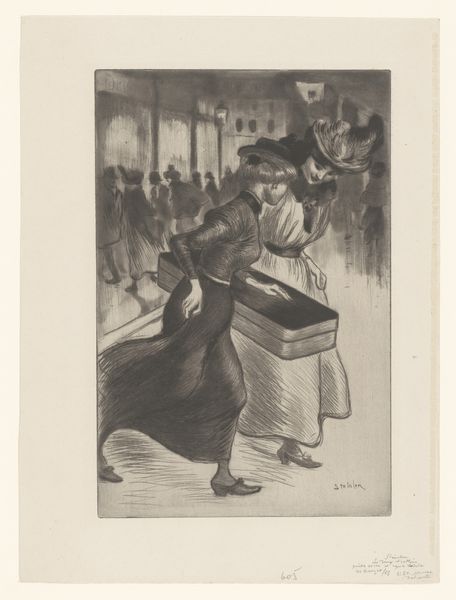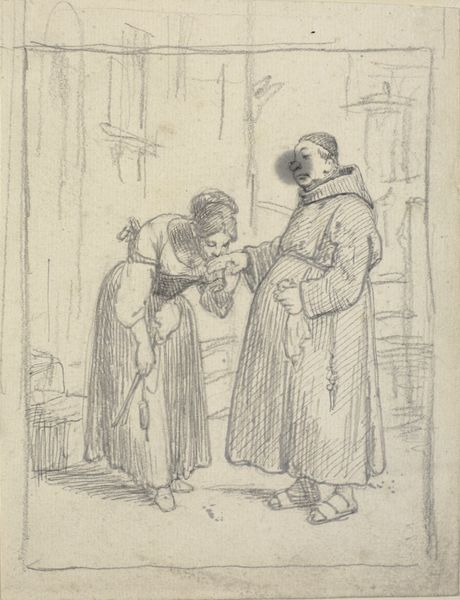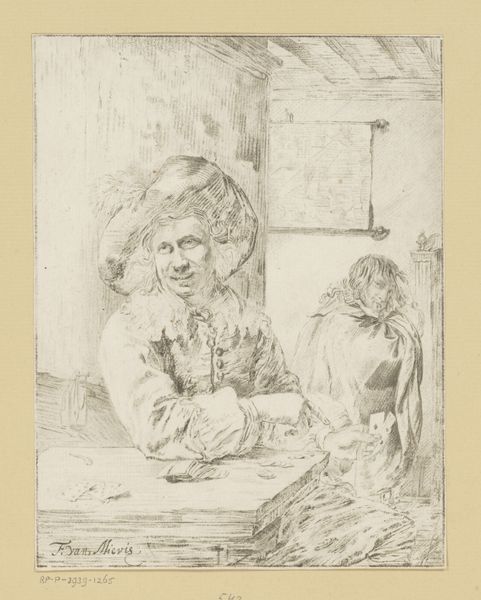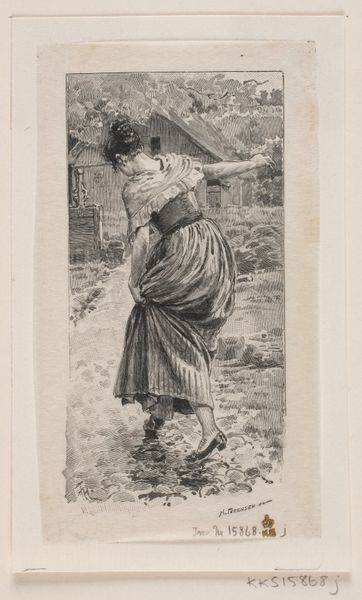
Laundresses (Blanchisseuses) (How Quickly Youth Fades! / Jeunesse passe vite vertu!) 1893
0:00
0:00
Dimensions: Plate: 15 1/2 × 9 in. (39.4 × 22.9 cm) Sheet: 17 15/16 × 9 7/8 in. (45.5 × 25.1 cm)
Copyright: Public Domain
Curator: Lepère's 1893 etching and aquatint, "Laundresses," also known as "How Quickly Youth Fades!" offers a glimpse into the lives of working women in late 19th-century France. The work presents a worn older woman and a youthful younger one, both possibly en route to the communal laundry. Editor: There’s such a weariness in the image. The somber tones of the older woman, etched with a deliberate, almost painful detail, starkly contrast with the softer, more vibrant hues of the younger woman. It’s an immediate and affecting juxtaposition. Curator: Indeed, and let's unpack the title alongside that stark contrast. The French title speaks volumes: "Jeunesse passe vite vertu!" which translates to "Youth passes quickly virtue!" It's a potent reminder of the transient nature of youth and perhaps, even innocence. Lepère was keenly aware of class and labor issues, particularly concerning women. Editor: Formally, the print relies on a striking dichotomy, using strong vertical lines, especially the figure on the left, to anchor the composition and highlight the emotional distance between the figures. It's a semiotic field day of age, class, and societal expectation, all distilled into ink on paper. The visual weight emphasizes the burden these women carry, literally, in those laundry bags. Curator: Absolutely. Consider the placement of the older woman, partially cut off by the frame, almost as if she is fading into the background, a shadow of the younger woman's potential future. Lepère isn't just showing us an image, but commenting on a societal structure that exploits female labor and perpetuates cycles of poverty and aging. Editor: And yet, there's a tenderness as well. The artist does not seem to relish in portraying despair. I can appreciate Lepère's mastery of his technique, that captures both a stark social reality and allows a subtle aestheticism and respect to his subjects. Curator: It’s this duality that gives the work its lasting power. It serves not only as a historical record of women's work but also invites a continuous dialogue around the exploitation of labor and gender inequality. Editor: The technical virtuosity alongside its emotional and social charge truly elevates it. It gives us the power of both artistic statement and also a visual social commentary.
Comments
No comments
Be the first to comment and join the conversation on the ultimate creative platform.
